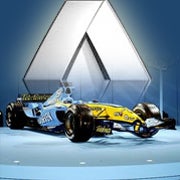Carlos Ghosn is a multicultural
Spain’s Fernando Alonso has just been crowned the Formula One world champion, the youngest driver to win that title. Alonso belongs to the Renault driving team. He not only wins races; he also wins in the world of advertising where he earns as much as his entire team. The image of the Renault brand has also benefited from his success. Yet despite the increased visibility Renault gains from competing in Formula One, auto analysts believe Renault’s new president, the Brazilian Carlos Ghosn, could decide to do without the racing team. Ghosn is known as the “cost killer” of the auto industry. His turn at the helm of Nissan brought the Japanese automaker out of the red and made it the most profitable company in the industry. Now Ghosn is running both Renault and Nissan. His goal is to improve the profitability of both companies and find a way to coordinate the way they are managed.

Carlos Ghosn is a multicultural
Sign up to stay informed about our latest article releases.